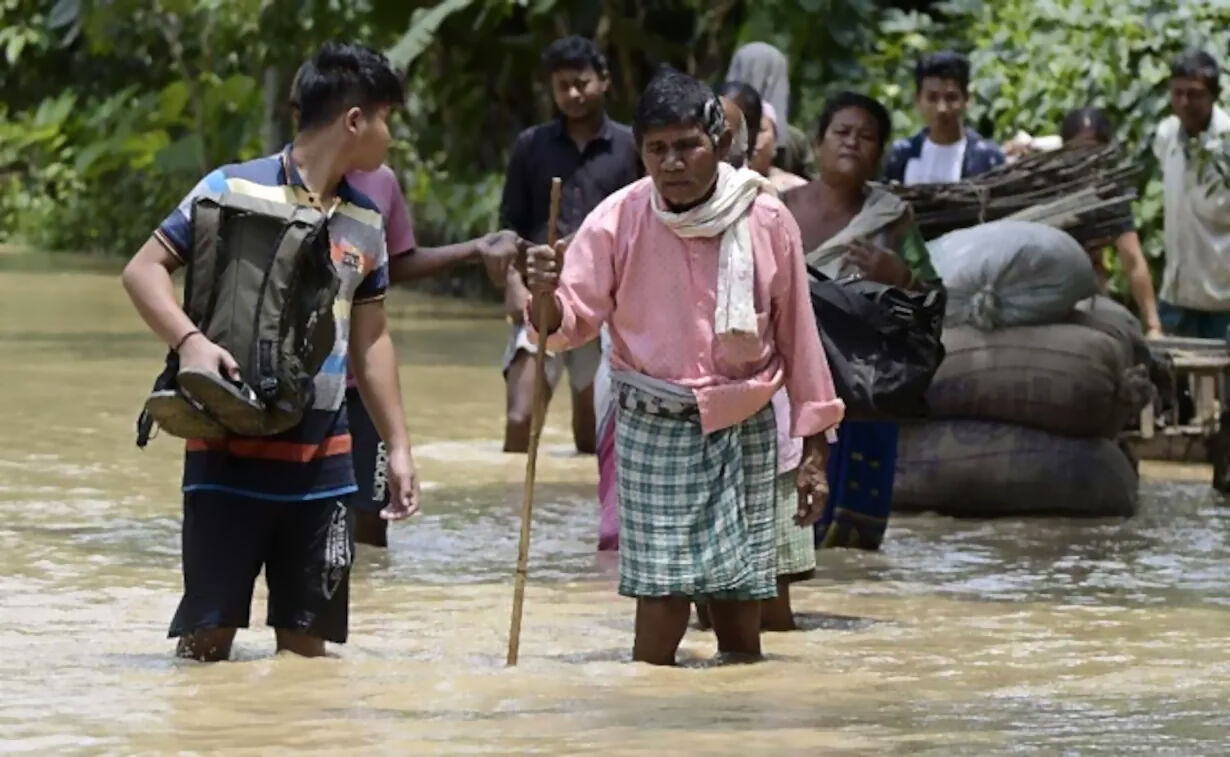Avoidable destruction?

Every year, Assam floods render the embankments useless and claim lives, curtail livelihoods, destroy crops and affect wildlife. This time around, at least 44 people have been killed and 11 lakh people have been affected across 25 districts. Croplands have been washed away and critical transportation routes are disrupted — adding to the woes of tea plantations, particularly in the Barak Valley. Severe floods hit the state almost every year but no stable adaptation plan appears to have been implemented on the ground. Flooding is indeed an essential phenomenon in the state, rejuvenating the soil with rich alluvium, but a significant part of the damage it brings with it is preventable. Considering the fact that Assam's 31.05 lakh hectares area (40 per cent) of the total 78.52 lakh hectares is prone to annual flooding, a long-term sustainable policy intervention is still absent. Detailed understanding of the factors contributing to Assam's annual flooding is pertinent. Risky rivers in the state, particularly Brahmaputra, have steep slopes — leading up to disproportionate sedimentation. Thicker river beds increase the chances of massive flooding. Furthermore, Guwahati also has a typical geographical make-up that renders it vulnerable to recurring floods. While these are natural factors and very little can be done to fix them, humans too have contributed immensely to the imbroglio. Bank erosion is one such leading causal factor in which the role of human interference cannot be ruled out. It is reported that over the last seven decades, eight per cent of the state's total area has been engulfed by eroding rivers. Erosion not just leads to the widening of the river but also allows it to change its course — leading to floods in newer areas. Deforestation along the banks, combined with the sharp flow of Brahmaputra, has been making matters worse each passing year. Encroachment of wetlands has been another factor exacerbating the flood situation in Assam. It is needless to say that wetlands are crucial natural structures, particularly in flood-prone regions, which absorb the excess flow of water and save a large part of the damage. Thanks to greed-driven human encroachments, the number of wetlands is on a steep decline in Assam. Recurring destruction faced by the state on account of floods speaks out loud that responsible authorities and institutions can no longer absolve themselves of their duty of improving the situation in the state. State government's action has thus far largely been limited to building embankments which get easily washed away. Occasionally, it has also tried out desilting of river beds — removing sediments so that rivers can absorb more water before overflowing. This holds good for movement of bigger cargo ships but hardly solves the flood problem as sedimentation process is very quick in rivers like Brahmaputra. Construction of big dams have their own set of environmental and social fallouts. One thing is certain, recurring floods are here to stay. People and the government have to find sustainable ways to live with it. Despite large economic costs, one-off measures including embankments and desilting have failed to deliver the required result. A sustainable solution is possible only through a well-designed strategy and collaborative action. While Assam remains the highlight, neighbouring states also share a good part of the problem. All the states must pool in their resources and information around the flow of flood-causing rivers in order to find a shared solution. Central government, apart from acknowledging Assam floods as a national disaster, can also play a significant role in facilitating coordination among states. While such measures need to be initiated with a long-term perspective, the government would do well to ensure immediate relief provisioning. People also need to understand the perils of deforestation and vitality of wetlands. Expression of strong public awareness around these issues will also prompt the political forces to turn their focus in this direction. A lot has been lost, and more is at risk. Let the state and Central government and the people decide when to say no to the avoidable part of the destruction.



